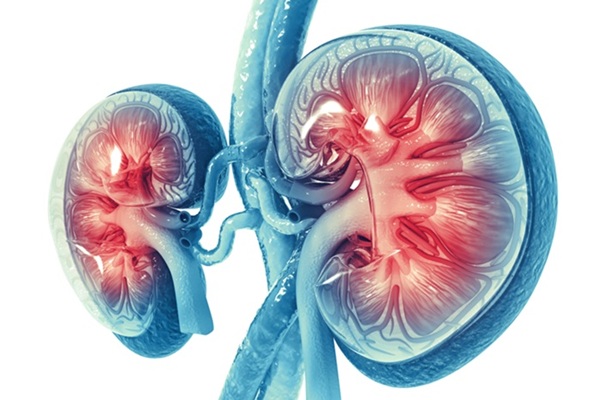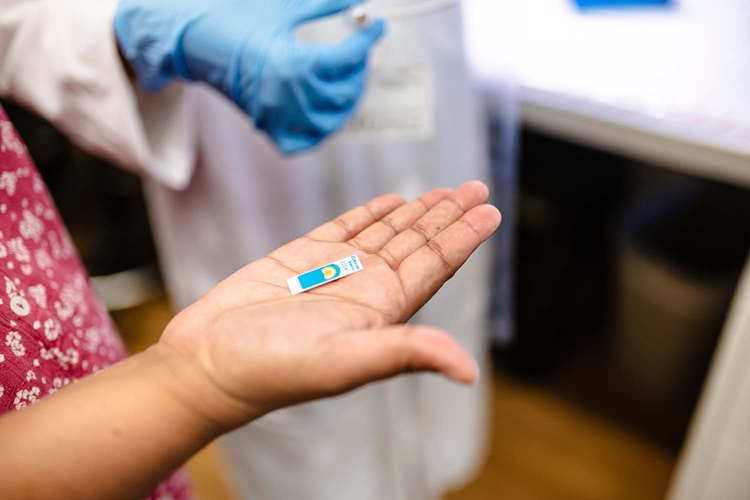Synovial Fluid Neutrophils Phenotyped in Oligoarticular Juvenile Idiopathic Arthritis
|
By LabMedica International staff writers Posted on 29 Apr 2021 |
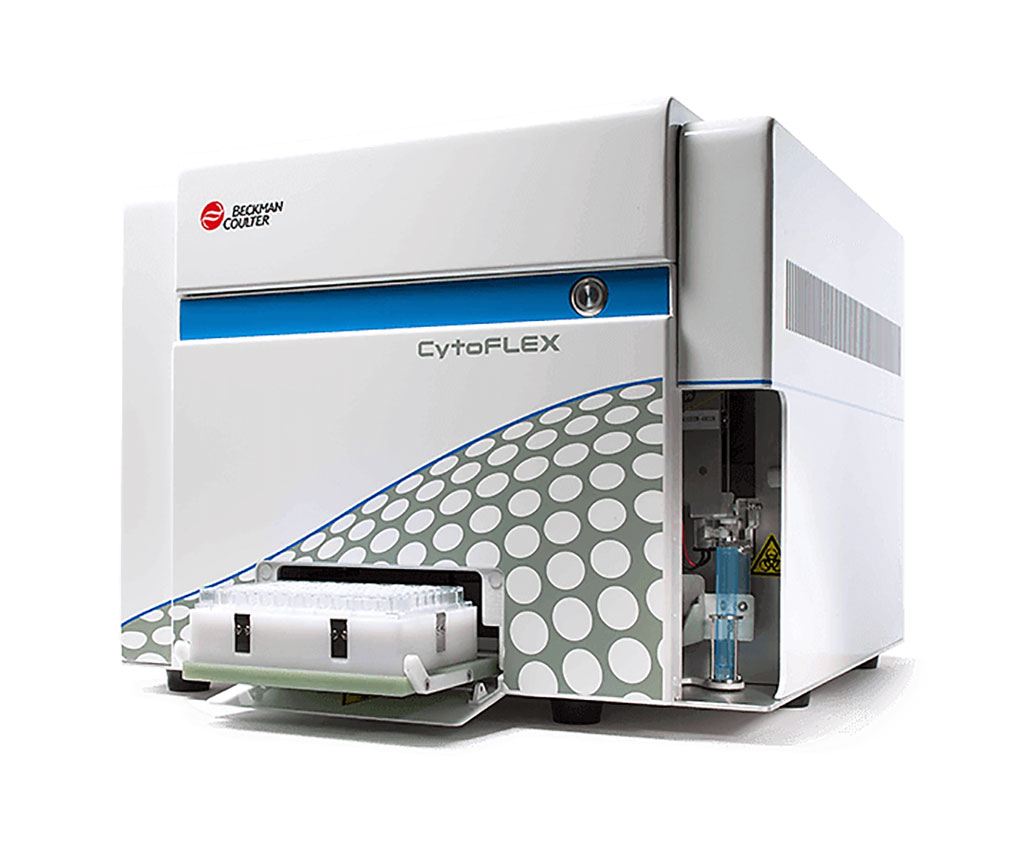
Image: The CytoFLEX Flow Cytometer has a large dynamic range to resolve dim and bright populations in the same sample (Photo courtesy of Beckman Coulter)
Juvenile idiopathic arthritis (JIA) is an inflammatory rheumatic joint disease affecting children. Despite disease onset being at a young age, symptoms may be lifelong and include irreversible joint damage or growth disturbances.
The most common subtype in the Western world is oligoarticular, commonly characterized by asymmetric disease onset with inflammation in one to four large joints. Neutrophils are the most prevalent immune cells in the synovial fluid in inflamed joints of children with oligoarticular juvenile idiopathic arthritis.
A multidisciplinary team of medical scientists at Lund University (Lund, Sweden) obtained neutrophils from paired blood and synovial fluid from 17 patients with active oligoarticular JIA were investigated phenotypically and 13 functionally (phagocytosis and oxidative burst, by flow cytometry). In a subset of six patients, blood samples were also obtained during inactive disease at a follow-up visit. The presence of CD206-expressing neutrophils was investigated in synovial biopsies from four patients by immunofluorescence.
Total white blood cell counts and relative frequency of neutrophils were investigated in the blood and synovial fluid samples on an XN-350 instrument (Sysmex Corporation, Kobe, Japan). Synovial, oral, and purified cell samples were washed with PBS after staining. Samples were analyzed on a FACS Canto II flow cytometer (BD Biosciences, San Jose, CA, USA) or a CytoFLEX (Beckman Coulter, Brea, CA, USA). Neutrophil maturity was determined using surface markers. Others methods used by the scientists included immunofluorescence staining of synovial tissue biopsies; stimulation of healthy blood neutrophils with JIA synovial fluid; investigating neutrophils from the healthy oral cavity; and neutrophil effector function.
The team reported that neutrophils in synovial fluid had an activated phenotype, characterized by increased CD66b and CD11b levels, and most neutrophils had a CD16hi CD62Llow aged phenotype. A large proportion of the synovial fluid neutrophils expressed CD206, a mannose receptor not commonly expressed by neutrophils, but by monocytes, macrophages, and dendritic cells. CD206-expressing neutrophils were also found in synovial tissue biopsies. The synovial fluid neutrophil phenotype was not dependent on transmigration alone. Functionally, synovial fluid neutrophils had reduced phagocytic capacity and a trend towards impaired oxidative burst compared to blood neutrophils. In addition, the effector functions of the synovial fluid neutrophils correlated negatively with the proportion of CD206+ neutrophils.
The authors concluded that neutrophils in the inflamed joint in oligoarticular JIA were altered, both regarding phenotype and function. Neutrophils in the synovial fluid were activated, had an aged phenotype, had gained monocyte-like features, and had impaired phagocytic capacity. The impairment in phagocytosis and oxidative burst was associated with the phenotype shift. They speculated that these neutrophil alterations might play a role in the sustained joint inflammation seen in JIA. The study was published on April 9, 2021 in the journal Arthritis Research & Therapy.
Related Links:
Lund University
Sysmex Corporation
BD Biosciences
Beckman Coulter
The most common subtype in the Western world is oligoarticular, commonly characterized by asymmetric disease onset with inflammation in one to four large joints. Neutrophils are the most prevalent immune cells in the synovial fluid in inflamed joints of children with oligoarticular juvenile idiopathic arthritis.
A multidisciplinary team of medical scientists at Lund University (Lund, Sweden) obtained neutrophils from paired blood and synovial fluid from 17 patients with active oligoarticular JIA were investigated phenotypically and 13 functionally (phagocytosis and oxidative burst, by flow cytometry). In a subset of six patients, blood samples were also obtained during inactive disease at a follow-up visit. The presence of CD206-expressing neutrophils was investigated in synovial biopsies from four patients by immunofluorescence.
Total white blood cell counts and relative frequency of neutrophils were investigated in the blood and synovial fluid samples on an XN-350 instrument (Sysmex Corporation, Kobe, Japan). Synovial, oral, and purified cell samples were washed with PBS after staining. Samples were analyzed on a FACS Canto II flow cytometer (BD Biosciences, San Jose, CA, USA) or a CytoFLEX (Beckman Coulter, Brea, CA, USA). Neutrophil maturity was determined using surface markers. Others methods used by the scientists included immunofluorescence staining of synovial tissue biopsies; stimulation of healthy blood neutrophils with JIA synovial fluid; investigating neutrophils from the healthy oral cavity; and neutrophil effector function.
The team reported that neutrophils in synovial fluid had an activated phenotype, characterized by increased CD66b and CD11b levels, and most neutrophils had a CD16hi CD62Llow aged phenotype. A large proportion of the synovial fluid neutrophils expressed CD206, a mannose receptor not commonly expressed by neutrophils, but by monocytes, macrophages, and dendritic cells. CD206-expressing neutrophils were also found in synovial tissue biopsies. The synovial fluid neutrophil phenotype was not dependent on transmigration alone. Functionally, synovial fluid neutrophils had reduced phagocytic capacity and a trend towards impaired oxidative burst compared to blood neutrophils. In addition, the effector functions of the synovial fluid neutrophils correlated negatively with the proportion of CD206+ neutrophils.
The authors concluded that neutrophils in the inflamed joint in oligoarticular JIA were altered, both regarding phenotype and function. Neutrophils in the synovial fluid were activated, had an aged phenotype, had gained monocyte-like features, and had impaired phagocytic capacity. The impairment in phagocytosis and oxidative burst was associated with the phenotype shift. They speculated that these neutrophil alterations might play a role in the sustained joint inflammation seen in JIA. The study was published on April 9, 2021 in the journal Arthritis Research & Therapy.
Related Links:
Lund University
Sysmex Corporation
BD Biosciences
Beckman Coulter
Latest Immunology News
- New Test Distinguishes Vaccine-Induced False Positives from Active HIV Infection
- Gene Signature Test Predicts Response to Key Breast Cancer Treatment
- Chip Captures Cancer Cells from Blood to Help Select Right Breast Cancer Treatment
- Blood-Based Liquid Biopsy Model Analyzes Immunotherapy Effectiveness
- Signature Genes Predict T-Cell Expansion in Cancer Immunotherapy
- Molecular Microscope Diagnostic System Assesses Lung Transplant Rejection
- Blood Test Tracks Treatment Resistance in High-Grade Serous Ovarian Cancer
- Luminescent Probe Measures Immune Cell Activity in Real Time
- Blood-Based Immune Cell Signatures Could Guide Treatment Decisions for Critically Ill Patients
- Novel Tool Predicts Most Effective Multiple Sclerosis Medication for Patients
- Companion Diagnostic Test for CRC Patients Identifies Eligible Treatment Population
- Novel Tool Uses Deep Learning for Precision Cancer Therapy
- Companion Diagnostic Test Identifies HER2-Ultralow Breast Cancer and Biliary Tract Cancer Patients
- Novel Multiplex Assay Supports Diagnosis of Autoimmune Vasculitis
- Blood Test Predicts Immunotherapy Efficacy in Triple-Negative Breast Cancer
- Simple Genetic Testing Could Predict Treatment Success in Multiple Sclerosis Patients
Channels
Clinical Chemistry
view channel
Chemical Imaging Probe Could Track and Treat Prostate Cancer
Prostate cancer remains a leading cause of illness and death among men, with many patients eventually developing resistance to standard hormone-blocking therapies. These drugs often lose effectiveness... Read more
Mismatch Between Two Common Kidney Function Tests Indicates Serious Health Problems
Creatinine has long been the standard for measuring kidney filtration, while cystatin C — a protein produced by all human cells — has been recommended as a complementary marker because it is influenced... Read moreMolecular Diagnostics
view channel
Simple Urine Test to Revolutionize Bladder Cancer Diagnosis and Treatment
Bladder cancer is one of the most common and deadly urological cancers and is marked by a high rate of recurrence. Diagnosis and follow-up still rely heavily on invasive cystoscopy or urine cytology, which... Read more
Blood Test to Enable Earlier and Simpler Detection of Liver Fibrosis
Persistent liver damage caused by alcohol misuse or viral infections can trigger liver fibrosis, a condition in which healthy tissue is gradually replaced by collagen fibers. Even after successful treatment... Read moreHematology
view channel
Platelet Activity Blood Test in Middle Age Could Identify Early Alzheimer’s Risk
Early detection of Alzheimer’s disease remains one of the biggest unmet needs in neurology, particularly because the biological changes underlying the disorder begin decades before memory symptoms appear.... Read more
Microvesicles Measurement Could Detect Vascular Injury in Sickle Cell Disease Patients
Assessing disease severity in sickle cell disease (SCD) remains challenging, especially when trying to predict hemolysis, vascular injury, and risk of complications such as vaso-occlusive crises.... Read more
ADLM’s New Coagulation Testing Guidance to Improve Care for Patients on Blood Thinners
Direct oral anticoagulants (DOACs) are one of the most common types of blood thinners. Patients take them to prevent a host of complications that could arise from blood clotting, including stroke, deep... Read moreMicrobiology
view channel
Rapid Diagnostic Test Matches Gold Standard for Sepsis Detection
Sepsis kills 11 million people worldwide every year and generates massive healthcare costs. In the USA and Europe alone, sepsis accounts for USD 100 billion in annual hospitalization expenses.... Read moreRapid POC Tuberculosis Test Provides Results Within 15 Minutes
Tuberculosis remains one of the world’s deadliest infectious diseases, and reducing new cases depends on identifying individuals with latent infection before it progresses. Current diagnostic tools often... Read more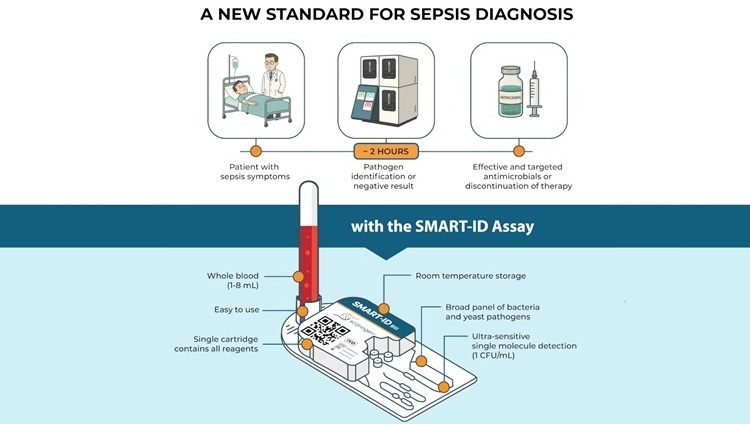
Rapid Assay Identifies Bloodstream Infection Pathogens Directly from Patient Samples
Bloodstream infections in sepsis progress quickly and demand rapid, precise diagnosis. Current blood-culture methods often take one to five days to identify the pathogen, leaving clinicians to treat blindly... Read morePathology
view channel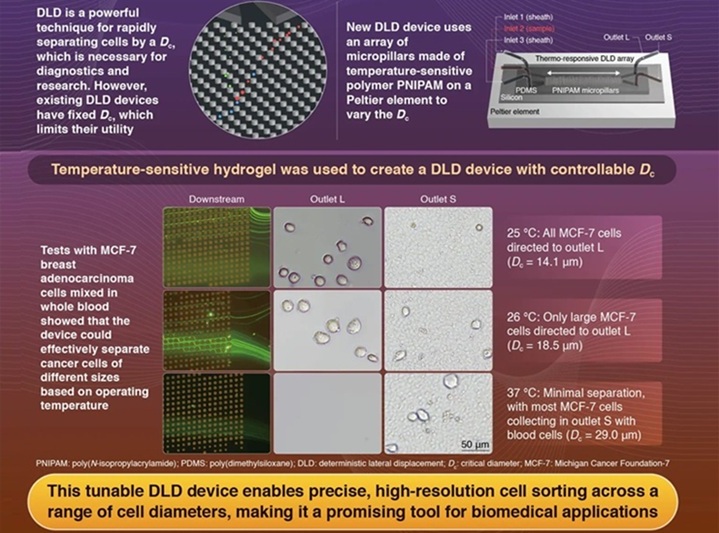
Tunable Cell-Sorting Device Holds Potential for Multiple Biomedical Applications
Isolating rare cancer cells from blood is essential for diagnosing metastasis and guiding treatment decisions, but remains technically challenging. Many existing techniques struggle to balance accuracy,... Read moreAI Tool Outperforms Doctors in Spotting Blood Cell Abnormalities
Diagnosing blood disorders depends on recognizing subtle abnormalities in cell size, shape, and structure, yet this process is slow, subjective, and requires years of expert training. Even specialists... Read moreTechnology
view channel
Artificial Intelligence Model Could Accelerate Rare Disease Diagnosis
Identifying which genetic variants actually cause disease remains one of the biggest challenges in genomic medicine. Each person carries tens of thousands of DNA changes, yet only a few meaningfully alter... Read more
AI Saliva Sensor Enables Early Detection of Head and Neck Cancer
Early detection of head and neck cancer remains difficult because the disease produces few or no symptoms in its earliest stages, and lesions often lie deep within the head or neck, where biopsy or endoscopy... Read moreIndustry
view channel
Abbott Acquires Cancer-Screening Company Exact Sciences
Abbott (Abbott Park, IL, USA) has entered into a definitive agreement to acquire Exact Sciences (Madison, WI, USA), enabling it to enter and lead in fast-growing cancer diagnostics segments.... Read more












